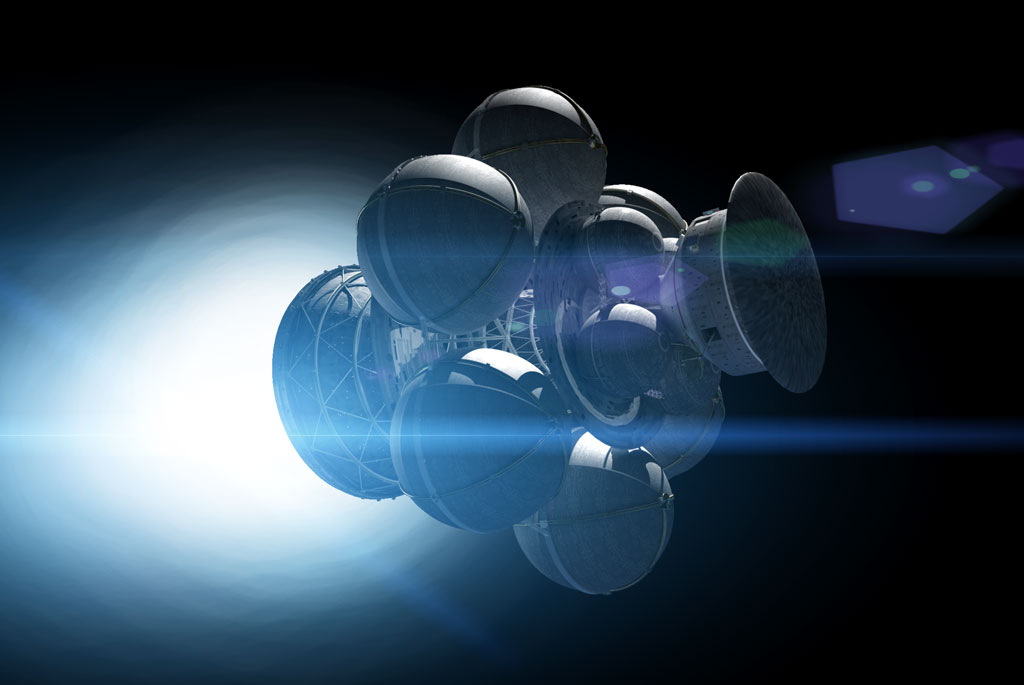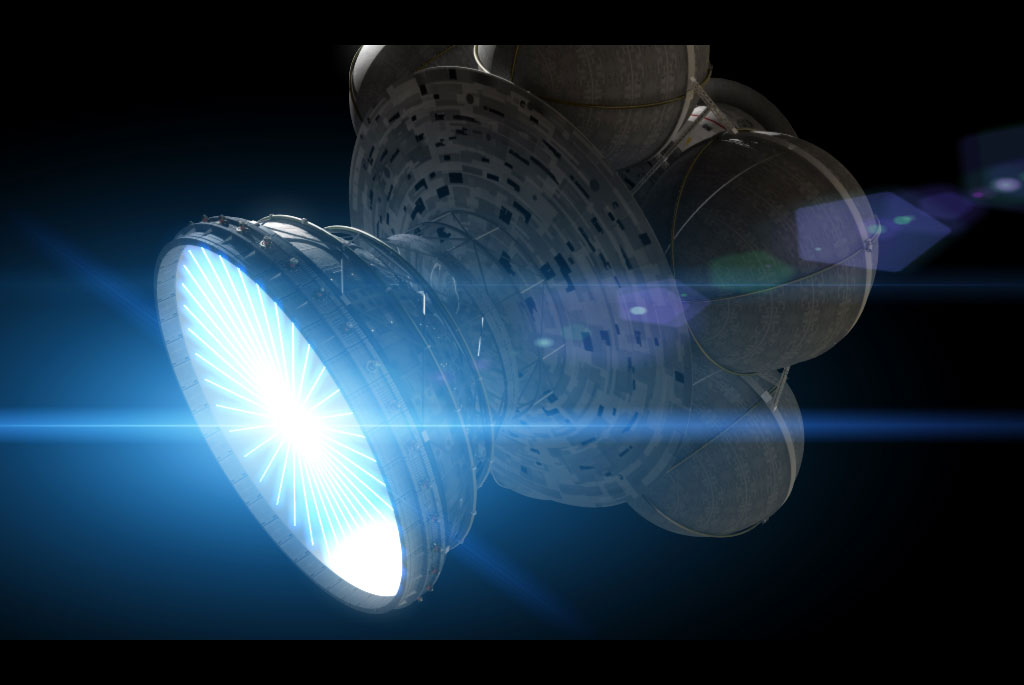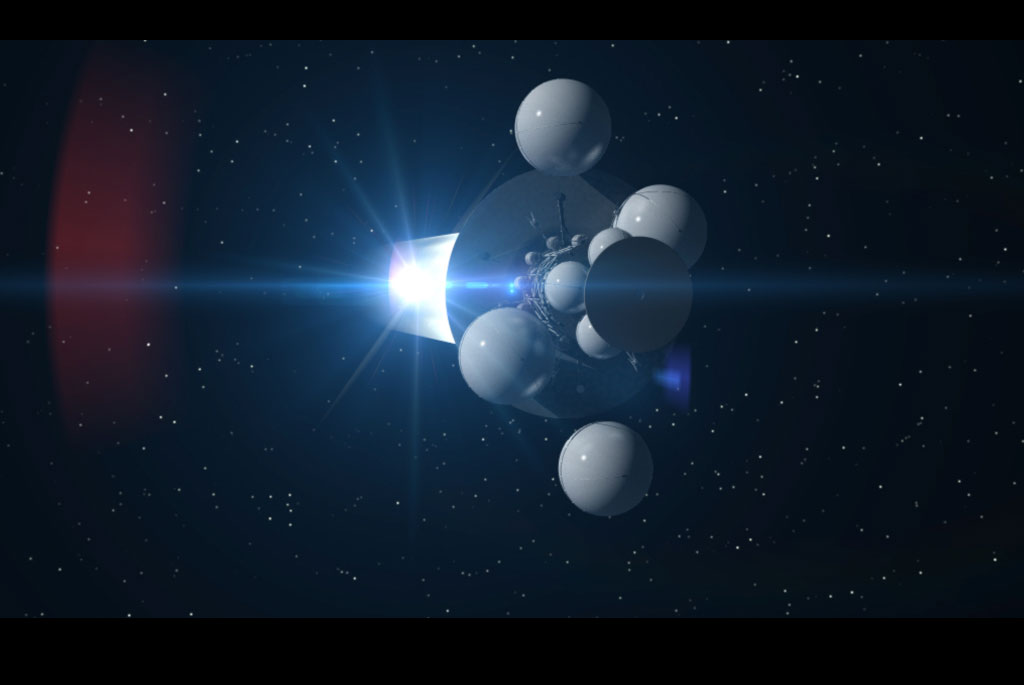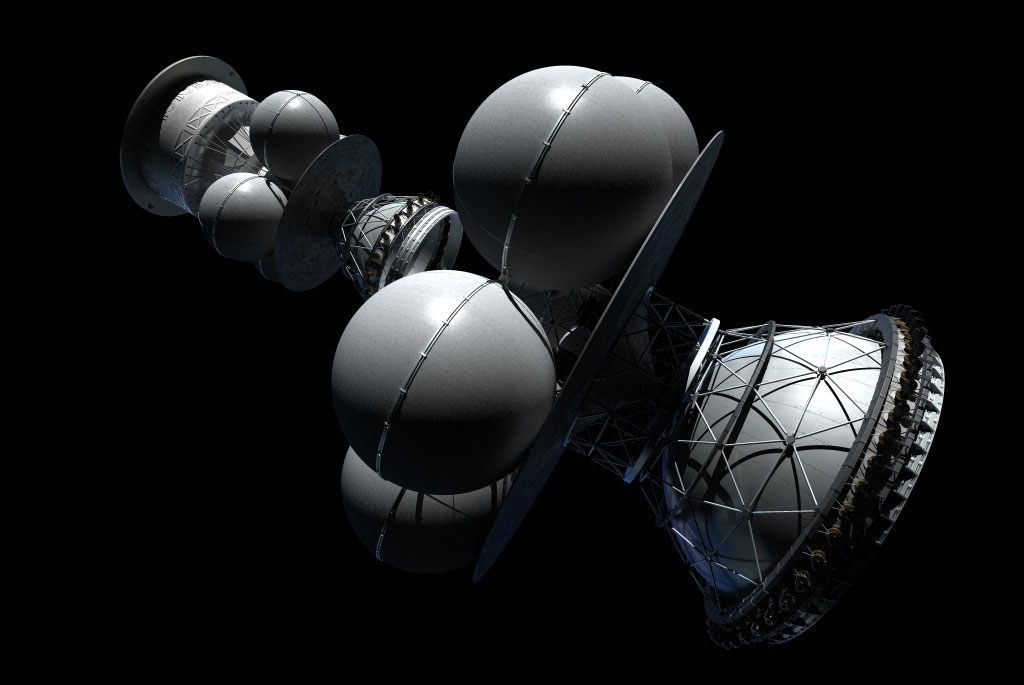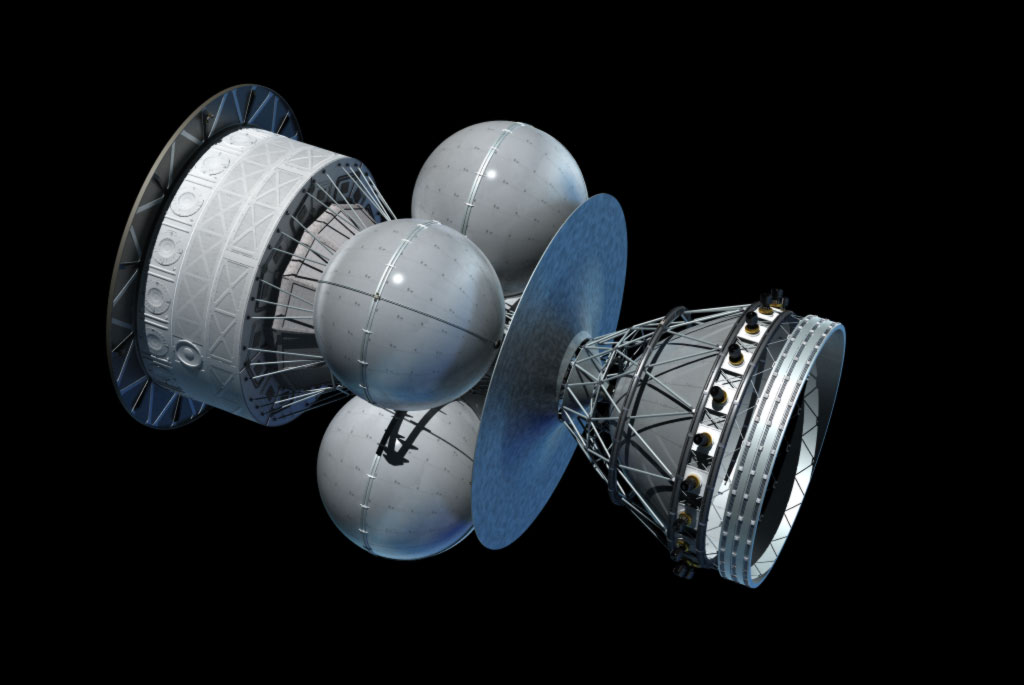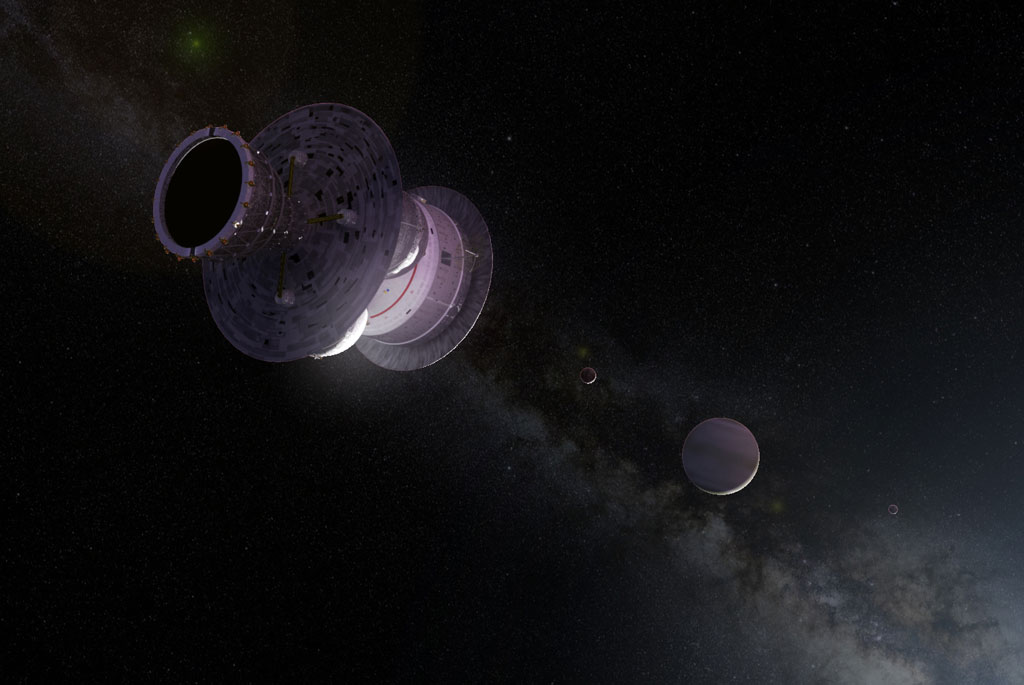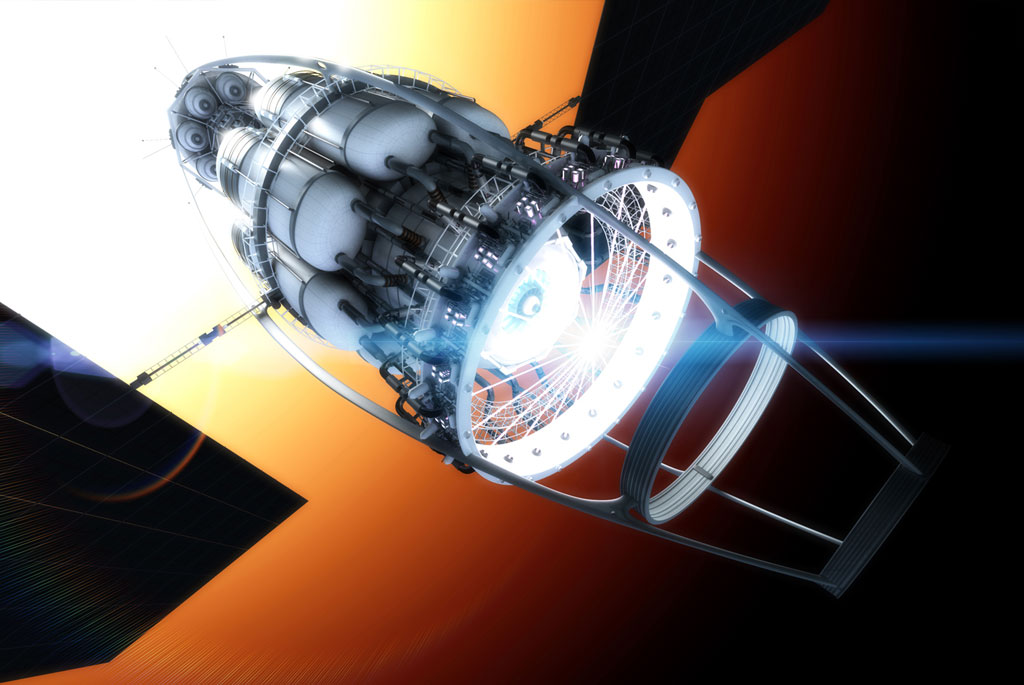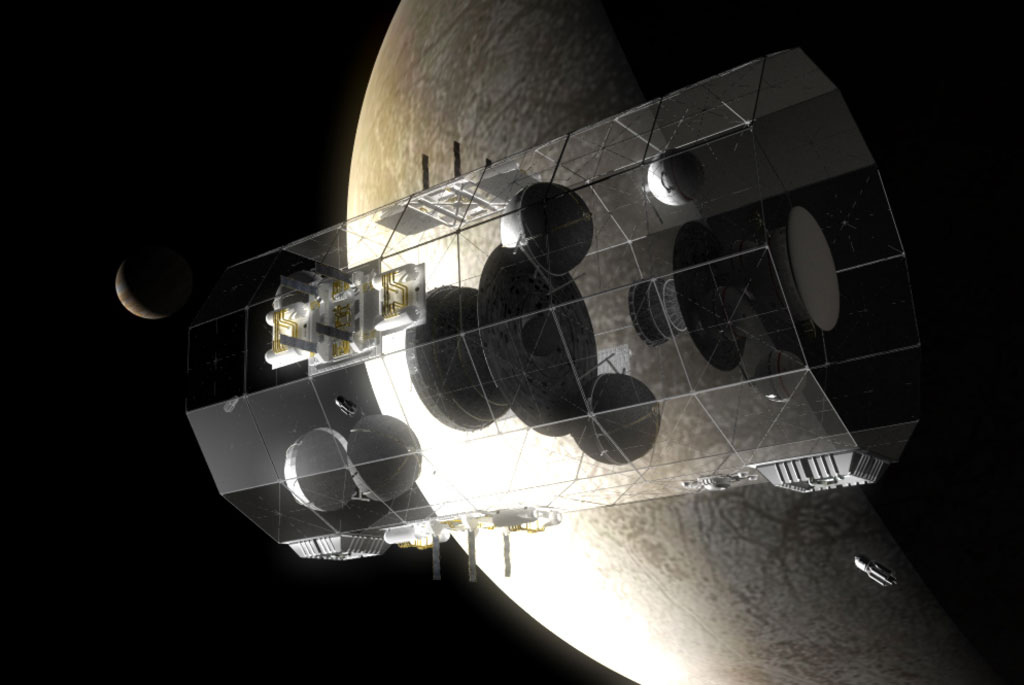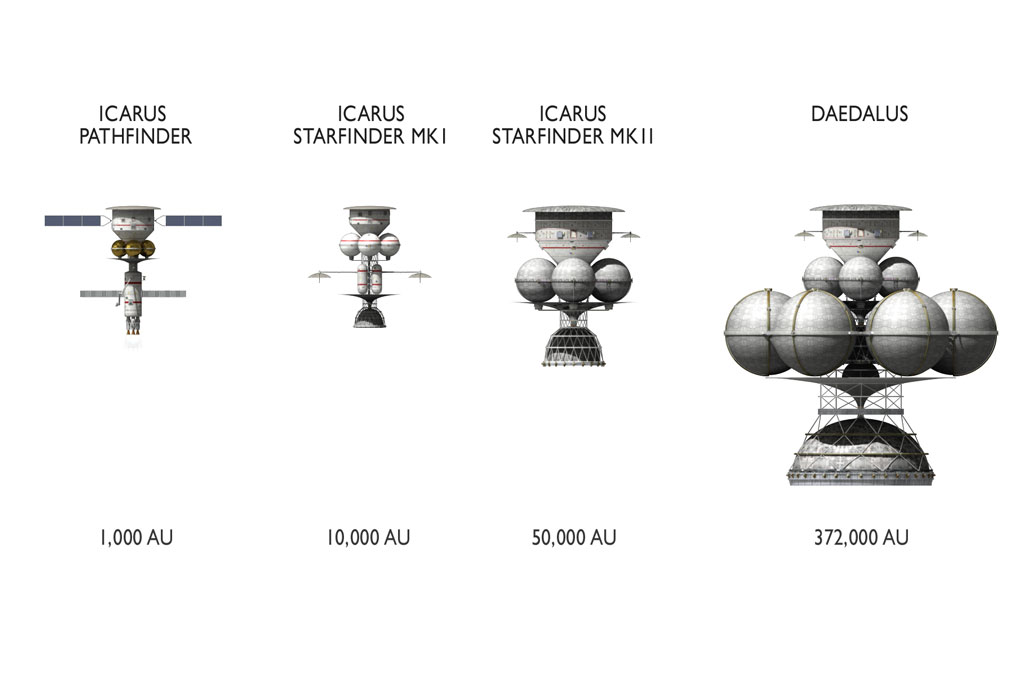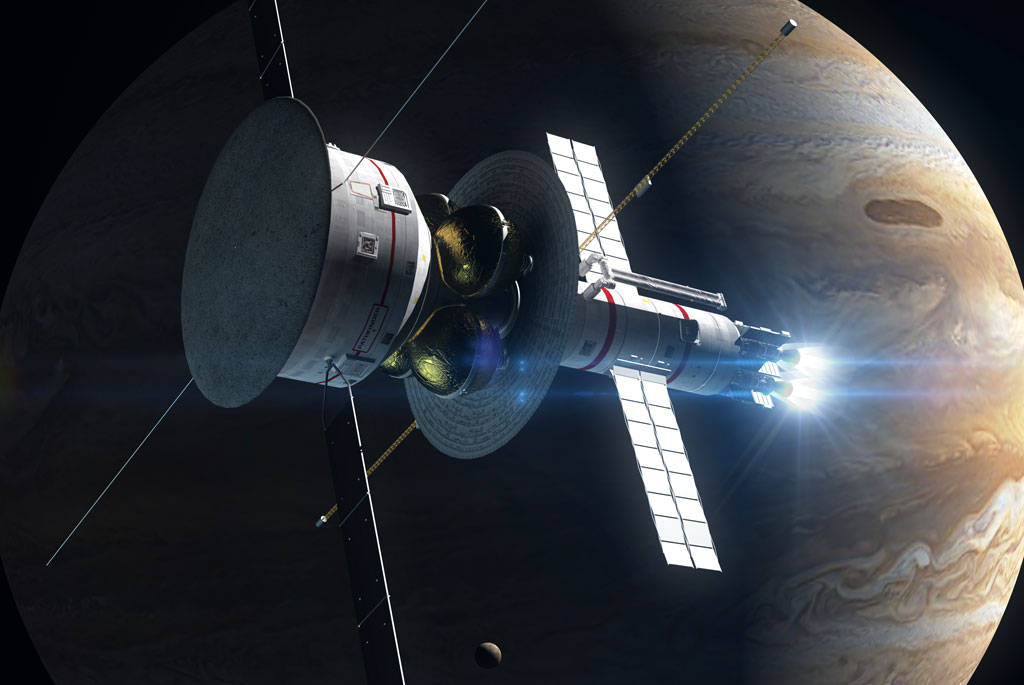Gallery: Visions of Interstellar Starship Travel
Daedalus Ignition
The Daedalus spacecraft's spherical tanks contain the fuel pellets for the nuclear fusion engine.
Daedalus Beams
Daedalus' Deuterium/Helium 3 fuel pellets are injected into the engine, where they are hit by electron beams, compressing them to the point that fusion occurs. Magnetic fields contain the expanding plasma.
Daedalus Fuel
During Daedalus' two years of first stage engine firing, empty fuel tanks are jettisoned to reduce weight.
Daedalus Split
Once all Daedalus' first stage fuel is consumed, the first stage is jettisoned and the second stage continues to accelerate for another 1.8 years – the vehicle now coasts, unpowered, for the remainder of the 50-year voyage.
Daedelus Second Stage
Daedalus' second stage carries radio telescopes, 2 5m optical telescopes, 18 probes, two autonomous spacecraft known as Wardens, computers, power supplies and a Beryllium erosion shield.
Daedalus Flyby
Daedalus' flyby of the target system would be over in a matter of hours, the data being relayed back to Earth, using the engine bell as a parabolic radio antenna.
Vacuum to Antimatter Rocket Interstellar Explorer System
VARIES – Vacuum to Antimatter Rocket Interstellar Explorer System, is a concept from Richard Obousy that would use enormous solar arrays to generate power for extremely powerful lasers, which, when fired at empty space, would create particles of antimatter which could be stored and used as fuel. The process would be used at the vehicle's destination to create fuel for the return journey.
Breaking space news, the latest updates on rocket launches, skywatching events and more!
Daedalus Construct
It was envisaged that the Daedalus starship would be constructed in orbit around the Jovian moon Europa.
Project Icarus
Project Icarus is looking again at interstellar spacecraft, in the light of new developments in physics, materials and astronomy. A series of smaller test vehicles is envisaged to test the new technologies.
Icarus Pathfinder
A potential spacecraft called Icarus Pathfinder would be powered by electromagnetic VASIMR (Variable Specific Impulse Magnetoplasma Rocket) engines, taking it out to 1,000 times the distance from Earth to the sun.
Mann, a former contributor to Space.com, is a Hungary-based space illustrator and a graphical engineer for Project Icarus, which is involved with researching possibilities for future interstellar travel. He's a freelance web designer, graphic designer, artist and illustrator, specializing in the areas of aerospace and astronomy.
